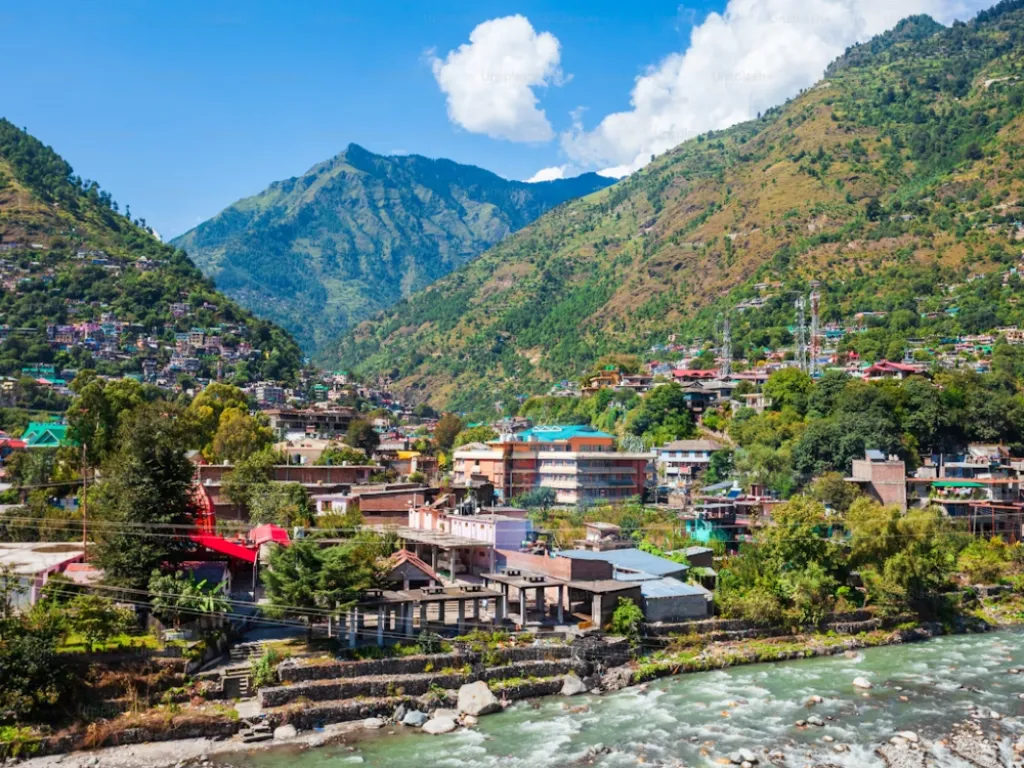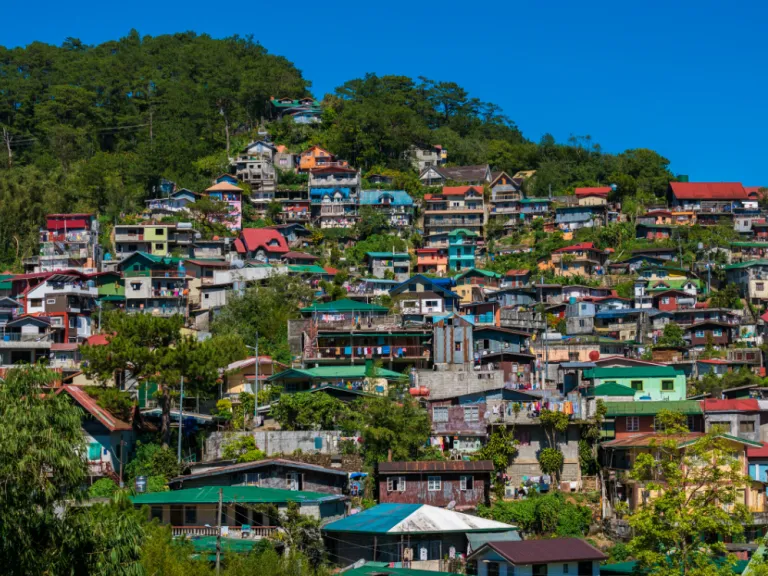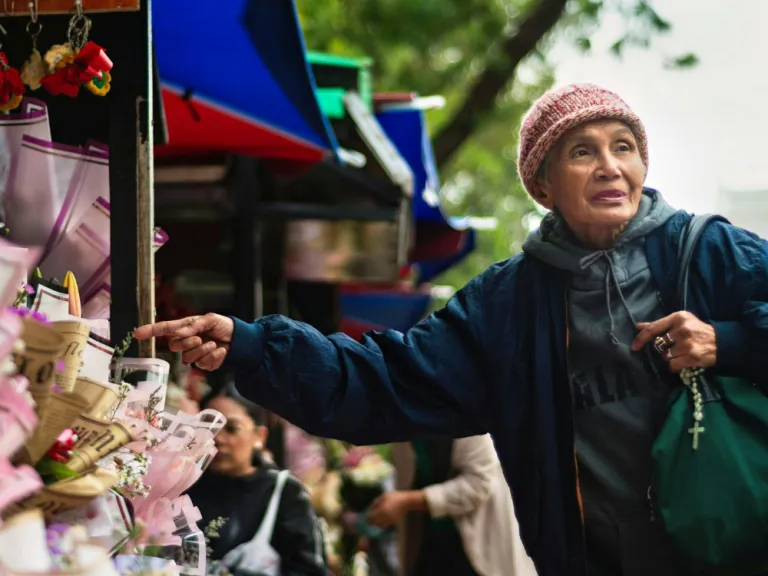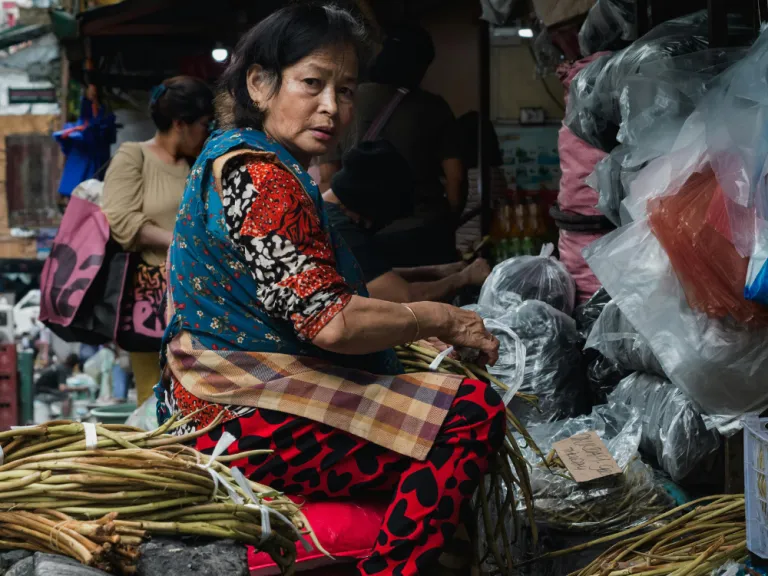Our favourite places to stay on this sleepy Cebu island.
Baguio Is Now Richer Than 7 Metro Manila Cities… but Locals Aren’t Happy About It

Baguio, also known as “The Summer Capital of Philippines”, just became the richest city outside Metro Manila, but residents say life in the City of Pines is starting to feel more suffocating than successful.
Are we even surprised? The number of tourists visiting the province every Christmas and summer season makes the city congested. But what exactly is the reason why locals aren’t thrilled by this news?
The price of being “rich”

Image credit: Canva Pro
Baguio may be winning on paper, but many locals say it doesn’t feel like it.
According to the Philippine Statistics Authority (PSA), the city’s economy reached ₱178.85 billion in 2024, making it the wealthiest city outside Metro Manila. Its growth slowed slightly to 5.8 percent, down from 9 percent in 2023, but each Baguio resident still technically produced ₱485,433 worth of goods and services last year. That’s richer per person than residents of seven cities in the National Capital Region.
Sounds impressive, right? Not quite for those who actually live there.
City Planning Officer Architect Donna Rillera Tabangin said people were hesitant to celebrate when the ranking was first announced in April. The reason? Many feel that the booming economy is also making daily life harder. Traffic has worsened, prices are rising, and the once-serene mountain city now feels overcrowded.
Tourism and business growth have made Baguio rich, but they’ve also strained its livability. For a lot of residents, progress feels like something they see happening around them, not something they truly benefit from.
Also read: Free Electric Shuttles Now Rolling Around Camp John Hay, Baguio
The city’s next move

Image credit: Canva Pro
To make sure growth doesn’t come at the expense of quality of life, the city government is running a “quality of life” survey, which is expected to finish by November. The goal is to understand how Baguio can turn its wealth into something more meaningful for its people.
Here’s what’s on the city’s agenda:
Promoting ecotourism to protect remaining forests and timberlands
Pushing for a circular economy focused on recycling and repurposing waste
Completing its smart city transformation by 2027 to attract sustainable investments
Despite these challenges, Baguio remains the economic heart of the Cordillera region. It accounted for nearly half (47.3 percent) of Cordillera’s ₱378.26-billion gross regional domestic product (GRDP) in 2024. Benguet followed with 23 percent, while provinces like Ifugao, Kalinga, and Abra showed signs of new growth in manufacturing, mining, and services.
Experts warn this concentration of wealth could widen inequality. Industry output in 2024 was 71 percent concentrated in Baguio and Benguet, while services were 72.1 percent, with Baguio producing 51 percent of that. The rest of the region risks being left behind.
Why locals aren’t happy

Image credit: Canva Pro
Locals say the city’s success has come with a price. Baguio no longer feels like it belongs to them.
Tourism and commerce may be driving the city’s income, but many feel that Baguio now caters more to visitors than to its residents. Hotels rise faster than public housing. Cafés and souvenir shops thrive while jeepney routes stay confusing and overcrowded.
When it rains, traffic slows down even more because people rely on private cars instead of public transport. And honestly, who wants to stand in the rain waiting for a ride to work or school? Locals say the problem is not only congestion but also accessibility.
Before tourism became a major income source, the local government could have made transportation and infrastructure more inclusive for everyone. Residents are now calling for proper drop-off zones, clearer waiting areas, and stricter traffic rules. Even simple discipline on where to load and unload can make a big difference.
For many, wealth means little if it does not translate to comfort and mobility. Until that happens, Baguio will keep feeling like a city built for tourists first and locals second.
Baguio’s story shows that progress and comfort don’t always go hand in hand. Yes, it’s possible for cities outside Manila to thrive, but real success depends on whether locals can actually feel that progress in their daily lives.
For other fast-growing Philippine cities, Baguio’s experience is a wake-up call: getting richer is one thing; staying liveable is another.
Featured image credit: Getty Images | Unsplash
Published at
About Author
Wynona Purl
Subscribe our Newsletter
Get our weekly tips and travel news!
Recommended Articles
10 Bantayan Island Resorts, Hotels, and Rentals for Your Tropical Escape 10 Best Mountain Cafes in the Philippines for Your Peak Coffee Experience Coffee date on the mountains, anyone?
10 Best Things to Do in Los Angeles Los Angeles is more than Hollywood stars. From hikes with killer views to beaches straight out of a rom-com, here are 10 must-do LA experiences for Filipino travellers or any wanderers in general!
10 Cutest Cafes in Japan That Are Totally One of a Kind From Pikachu snacks to Totoro cream puffs, here are 10 themed cafes in Japan that prove café hopping should be part of your travel itinerary.
10-day Christmas and New Year Japan Trip: Complete Travel Itinerary Celebrate Christmas and New Year in Japan with this 10-day holiday vacation itinerary packed with Tokyo lights, Kyoto charm, and Osaka adventures.
Latest Articles
Fly With Your Pet Guide: How to Use Philippine Airlines’ New FurPAL Service You can now travel with your pets on Philippine Airlines’ pet-friendly flights!
Japan to Block Visa Renewal for Foreigners With Unpaid Pensions and Health Insurance Japanese immigration insurance will use payment records as part of the stricter visa renewal process.
What to Know About Utqiagvik, Alaska and Its Extreme Sunlight Seasons A look into Utqiagvik, the Arctic town known for its midnight sun and long polar night
Dragon Treasure Castle Guide: A New Spot to Add to Your Baguio Itinerary This castle in Baguio looks straight out of Game of Thrones!
You May Get Flagged for a US Visa in 2025 If You Are a Filipino Transgender Traveller US Visa Guide for Trans

